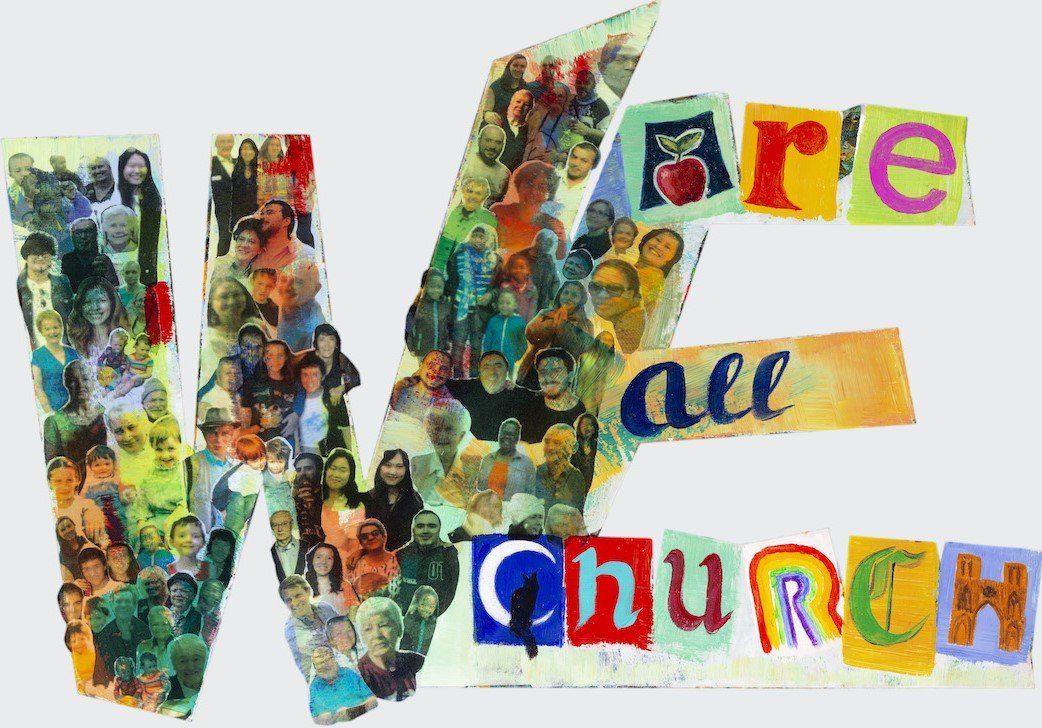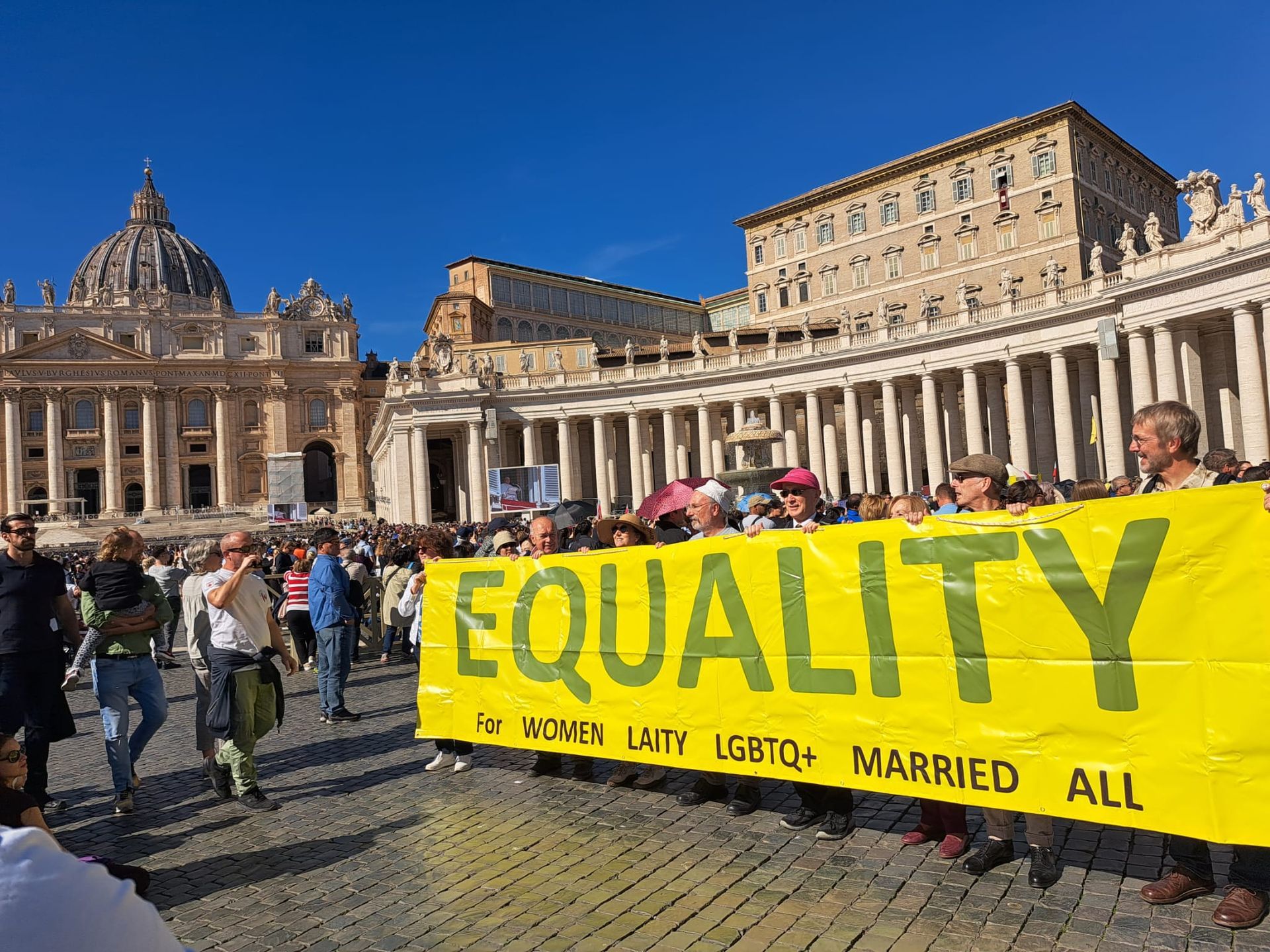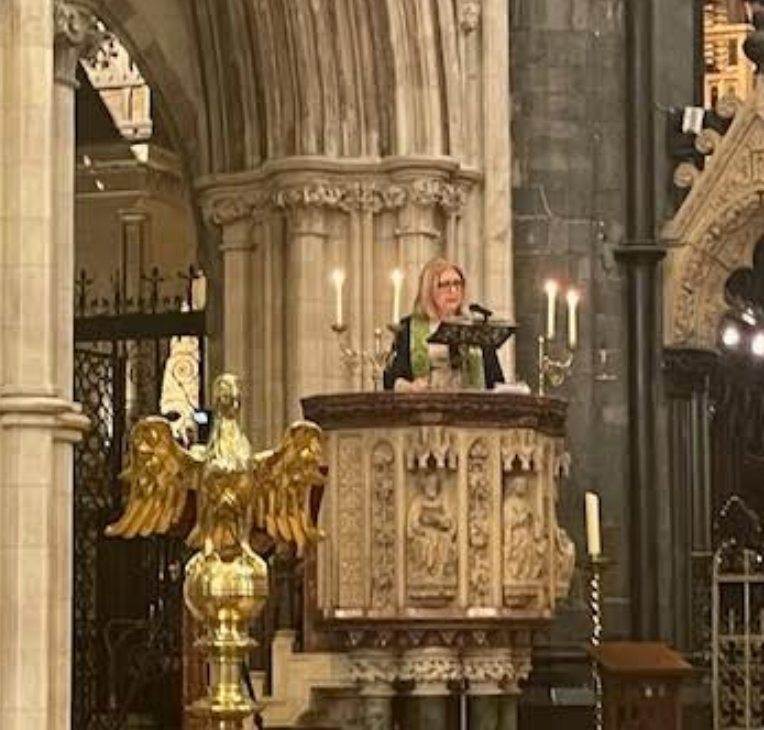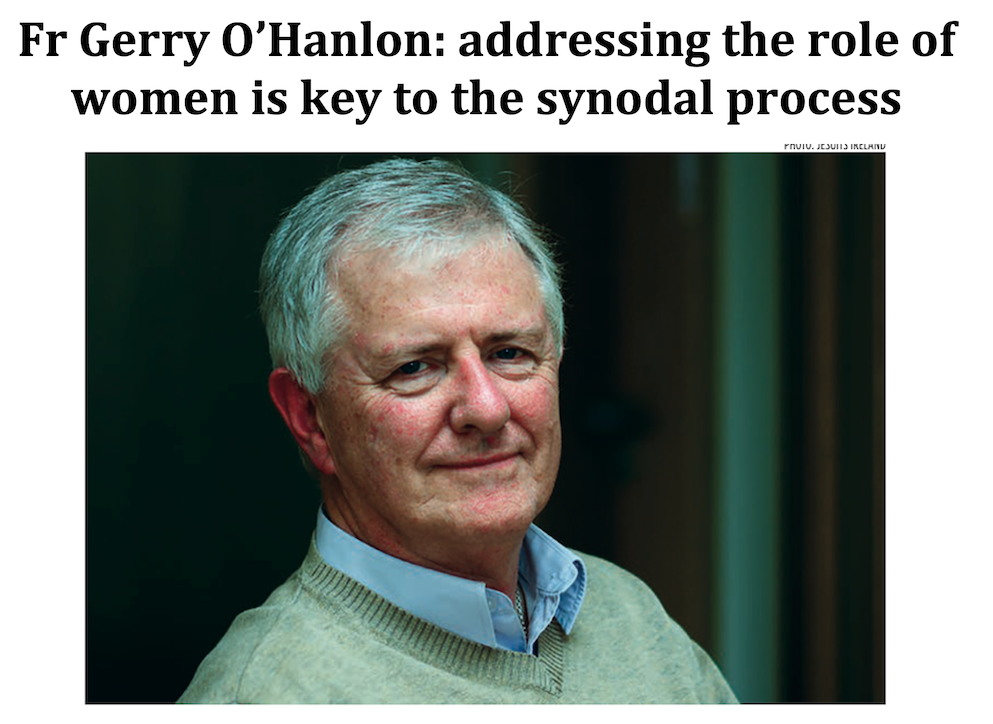Were Women at the Last Supper?
The Tablet used WAC Ireland's "Last Supper" painted by Irish artist Nora Kelly on its cover

Always at the table
The many images of Jesus eating with the Twelve Apostles on the night before he died might dominate our imagination. But the gospels suggest that a wider circle of followers shared his last Passover meal – and it is unthinkable that women were excluded / By MARGARET HEBBLETHWAITE; The Tablet 23 March 2024
WERE WOMEN AT the Last Supper? There is a general assumption that they were not. After all, in the paintings there are just 12 men plus Jesus (with the exception of Fra Angelico’s fresco which has Jesus’ mother in the scene, and some recent attempts at a more inclusive portrayal). The assumption of women’s absence from the Supper, visually reinforced, has become so deeply embedded in our Christian psyche that most people accept it without question. Sometimes it has even been made the basis for doctrinal conclusions, along the lines that Jesus was making a point about male (priestly) and female (non-priestly) roles by only inviting men to his Last Supper.
But artists are rarely theologians, and they take their cue from what other artists have done, even when it is inaccurate. Take for example the tradition of painting only one woman at the Feast of Pentecost, although Acts 1:14 clearly says there was a group of women with Jesus’ mother in the Upper Room. Twelve men around the mother of Jesus has become the symbol of Pentecost, just as 12 men plus Jesus seated around a table has become the iconographic indication of the Last Supper. But to be frank, it is quite enough for artists to have to fit 13 people into their paintings; so this number should be taken as representative of a larger group, rather than as an accurate teaching tool.
Increasingly scholars have been questioning the supposition that there were no women at the Last Supper. Let me say from the start that I am discounting the argument put forward by those who say women must have been there because “who else would have done the cooking?” It is welcome to find that Jesus dispatches two of his most senior male disciples, Peter and John, to prepare the meal (Luke 22:8). He did not share the patriarchal prejudices of his time.
THE SCRIPTURAL basis for thinking only men were present at the Last Supper – in so far as there is one – is that the synoptic gospels (but not John) stress the presence of the Twelve at the meal, and the Twelve were indeed all men: “He took his place with the Twelve” (Matthew 26:20); “He came with the Twelve” (Mark 14:17); “He took his place at the table and the Apostles with him” (Luke 22.14). But this is a comment on who was there, not on who was not there. For the climax of his ministry – the institution of the Eucharist, his arrest, death and Resurrection – Jesus called for the presence of his key colleagues (although the men ran away when he was arrested).
But it is also said, and more repeatedly, that Jesus was at the Last Supper with his “disciples” (Matthew 26:17, 18, 19, 26; Mark 14:12, 14, 16; Luke 22:11, 39; John 13:5). The creeping clericalism that elides the Apostles with the disciples is to be avoided. The disciples (μαθητα, mathētai, from the verb μανθάνω, manthanō, “to learn”) are a wider group and the Twelve were chosen from among them: “He called his disciples and chose twelve of them, whom he also named Apostles” (Luke 6:13). Apostles (πόστολοι, apostoloi, from the verb ποστέλλω, apostellō, “to send out”) are people sent out on mission. Obviously, you have to be a student before you can be sent out as a teacher.
Jesus did not send out women into situations where they might have been mocked, insulted or sexually accosted, but there is plenty of evidence that women were in the group of disciples. As Jesus went preaching through Galilee he was accompanied by the Twelve and by women, who included Maria of Magdala, Joanna, Susanna, and “many others” (Luke 8:1-3). Matthew and Mark also recognise that many women had “followed Jesus from Galilee and had provided for him” (Matthew 27:55; Mark 15:40). The women who went to the empty tomb were told: “Remember how he told you, while he was still in Galilee, that the Son of Man must be handed over to sinners, and be crucified, and on the third day rise again” (Luke 24:6-7); Jesus had said this “with only the disciples near him” (Luke 9:18- 22), so the women must have been disciples.
What more evidence is there that others were present at the Last Supper along with the Twelve? It would make little sense for Jesus to say, when questioned on who would betray him, “It is one of the Twelve” (Mark 14:20), if only the Twelve were present; he would have said, “It is one of you.” In the fourth gospel, “the disciple Jesus loved” leant on his breast at the Supper to ask the name of the betrayer (John 13:25). It is probably now a minority of Scripture scholars who still hold to the old tradition that the Beloved Disciple was John son of Zebedee, one of the Twelve. Two prominent Catholic biblical experts, Raymond Brown and Rudolf Schnackenburg (described by Joseph Ratzinger as “probably the most significant German-speaking Catholic exegete of the second half of the twentieth century”), changed their minds on this, while it is the conservative evangelical scholars who tend to stick with the traditional view.
Compared with the other gospels, which are based on the memories of the Galilean Twelve, the traditions coming from the
Beloved Disciple that shape the fourth gospel are not only very different in style and content, but are more Jerusalem-based. In fact, the main point made by those who still argue that the Beloved Disciple was John son of Zebedee is that he had to be one of the Twelve since he was at the Last Supper: this would leave us with a circular argument.
Not only was the Beloved Disciple present at the Last Supper, but Cleopas must have been too, and his unnamed walking companion to Emmaus, who is unlikely to be one of the Twelve since Cleopas does the talking. It is a reasonable guess that Cleopas is walking with his wife, as “Maria [the wife] of Clopas” had been present at the Cross (John 19:25), and Cleopas is the Greek equivalent of the Semitic name Clopas. They recognised Jesus in the way he took bread, blessed it, broke it, and gave it to them (Luke 24:30, 35). Only eyewitnesses of the first Eucharist three days earlier could have made this connection.
The Twelve-minus-one returned to the Upper Room after the Ascension, together with the women, and in the presence of the larger Christian family they decided to elect a replacement for Judas so as to become Twelve again. It had to be “one of the men who have accompanied us during all the time that the Lord Jesus went in and out among us, beginning from the baptism of John until the day when he was taken up from us”. There were two candidates considered eligible and suitable, Justus and Matthias, and Matthias was chosen by lot. So these two must also have been present at the Last Supper, since that was such an essential part of the apostolic witness.
Those present at the Last Supper, therefore, would have included the Beloved Disciple, Cleopas, probably his wife, Justus and Matthias, and undoubtedly more besides. The core Twelve were always accompanied by women and other disciples in the Upper Room. The women “returned” there from the empty tomb, to give their report “to the eleven and to all the rest” (Luke 24:9). Cleopas and his companion went there to tell their story to “the eleven and their companions” (Luke 24:33). And we know the disciples living and praying there together after the Ascension included women (Acts 1:14).
Why is more explicit mention not made of the presence of women at the Last Supper? It was not thought necessary to do so, because the presence of women was assumed whether or not they were mentioned. There is a give- away line in Matthew’s gospel at the end of the Miraculous Feeding. “Those who ate were about five thousand men, not including the women and children” (Matthew 14:21). Never again should we refer to that miracle as the Feeding of the Five Thousand.
SO MUCH for textual evidence, but we also need to employ our knowledge of the Passover meal, the critical last days of Jesus’ life and his attitude towards women. Given that the Passover meal was so much a family religious ritual, it would be unthinkable to eliminate the women from it. (In a bizarre turnaround, Eduard Schweizer, back in 1970, took this as an argument against the Last Supper being a Passover meal!) Are we to think that the “many women” who followed Jesus from Galilee to the Cross (Matthew 27:55) were told to go away for the Passover meal, only to be admitted to the Upper Room after it was over? Jesus says, “With such longing I have desired to eat this Passover with you before I suffer” (Luke 22:15). How would he bid goodbye to those women he loved so dearly – among them Maria of Magdala, Maria of Bethany, and his own mother – if he were to exclude them from the great farewell event that was also the doorway into a new form of relationship?
In “The Testimony of Mary Magdalene” the poet Sally Read sees a eucharistic meaning in the Noli me tangere spoken by the risen Jesus to Maria of Magdala. Although poetry is not historical argument, these words would have no resonance if she had not been at the Last Supper:
Dumbly, I reached out to touch.
His presence lay on my tongue
like a new language
I was learning to speak.
There is one final point. Since women’s invitation to the banquet of the Lord has never, ever been questioned, from the earliest days of the Acts of the Apostles to the present, does that not bear witness to them having been present at it always, right from its institution?
Margaret Hebblethwaite is writing a book about the women in the gospels.
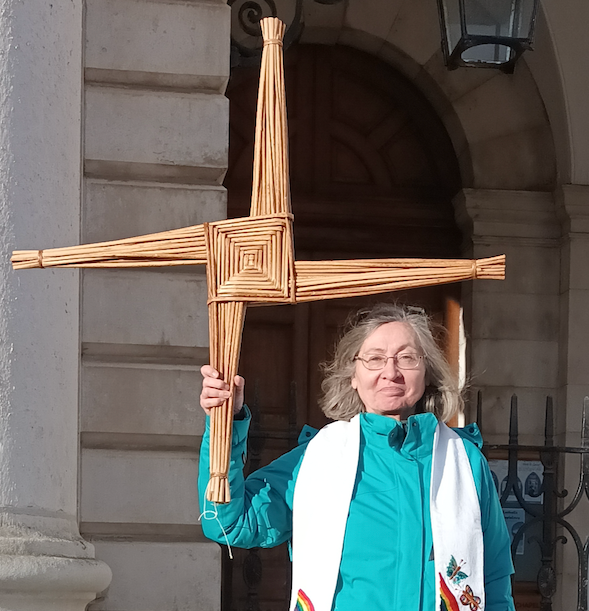
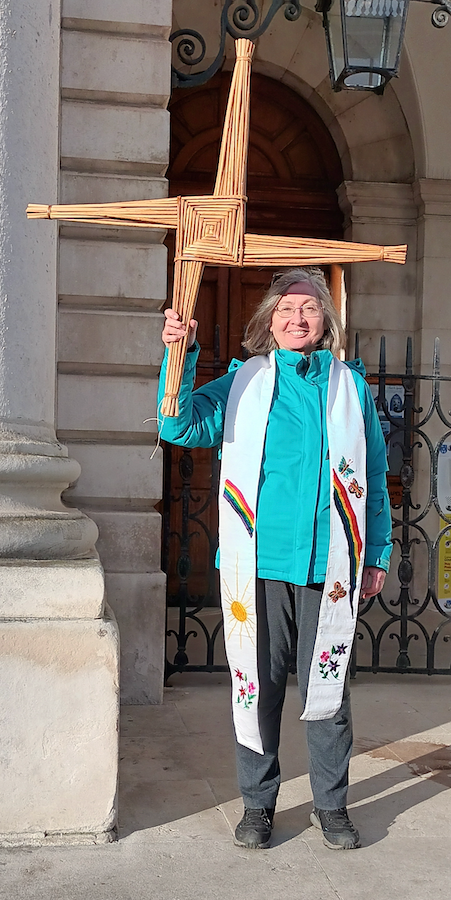
Women are a problem for the Catholic Church, an institution with ingrained misogyny - Soline Humbert
About us
We are working to develop inclusive communities based on our 6 Aims, while being open to engage with all sections of the church about our lives in the church today.
Contact Info



